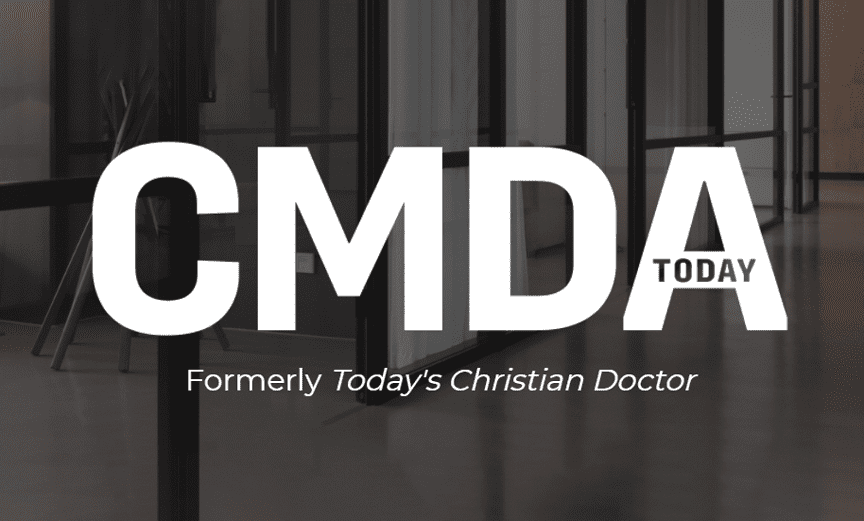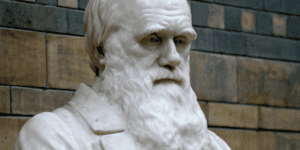
Christ with Us: Practicing Christ-like Presence in an Age of Burnout
One week into a rotation in the Surgical Intensive Care Unit (SICU), I found myself dreaming about the hospital. I was not dreaming about saying the wrong thing on rounds, but I was dreaming about our patients: Mr. Brown’s wife when she’d been told he may not survive his third surgery this admission; Mr. Thomas’s mom crying because she felt responsible for how he’d “turned out.” I told an attending I trusted that I was distressed by how much I was carrying patients’ stories with me, and she graciously admitted to me she’d struggled with the same thing early on in training. The solution, she said, is to not get so attached. “That’s how you burn out,” she said.
One week into a rotation in the Surgical Intensive Care Unit (SICU), I found myself dreaming about the hospital. I was not dreaming about saying the wrong thing on rounds, but I was dreaming about our patients: Mr. Brown’s wife when she’d been told he may not survive his third surgery this admission; Mr. Thomas’s mom crying because she felt responsible for how he’d “turned out.” I told an attending I trusted that I was distressed by how much I was carrying patients’ stories with me, and she graciously admitted to me she’d struggled with the same thing early on in training. The solution, she said, is to not get so attached. “That’s how you burn out,” she said.
I wanted to readily accept her words of wisdom, but the thought unsettled me. It was not until finishing that rotation and starting seminary two days later that I put words to this unresolved conflict. As a Christian, I felt called to be present to suffering; as a trainee, I could not reconcile whether keeping my distance was actually a way of avoiding burnout or a symptom if it; and as a Christian trainee, it was unclear whether the kind of presence that felt faithful to my calling was really possible in the practice of modern healthcare.
What is Physician Presence and Why Does it Matter?
Physician presence has been on the minds of theologians and physicians alike in the recent past. Theologian Stanley Hauerwas wrote that presence is the essence of the practice of medicine: the physician’s ultimate commitment is not to cure, but to care by way of being present.[1] Coming from a completely secular perspective, a recent study in The Journal of the American Medical Association (JAMA) set out to describe practices that help cultivate greater presence in the clinical encounter. They defined physician presence as the “purposeful practice of awareness, focus, and attention with the intent to understand and connect with patients,” and they also observed that presence fosters connection and gives meaning to the vocation of medicine.[2],[3]
The disconnection between the desire to be present and the realities of modern healthcare that make it challenging to do so (i.e. administrative tasks, electronic health records, shortened clinic appointment times) has been associated with physician burnout.3 Experienced by about 50 percent of the physician workforce in the U.S.,[4] burnout is a syndrome characterized by emotional exhaustion, depersonalization and a reduced sense of personal accomplishment.[5] Christian healthcare professionals desiring greater connection and meaning in healthcare and seeking to answer the call to be present in a Christ-like way have the gift of looking to the ways in which Christ practiced presence in Scripture. Unfortunately, Christians are no less affected by burnout than their less religious or spiritual counterparts.[6]
Christ-like Presence: Burning Out at the Extremes
The Great Physician (Luke 5:31-32, Mark 5:25-34) models presence in a number of ways, but the pressures of modern healthcare can cause us to distort Christ’s examples and lead to extremes of presence not sustainable for merely human healers. When we internalize modern healthcare’s “hidden curriculum”-that the patient should always come first; that weakness is to be despised; that efficiency is paramount-even in our well-intentioned attempts to emulate Jesus, we may paradoxically find ourselves more burdened and burned out than refueled and restored. Let us look at two salient pictures of Christ’s presence that are easily distorted in today’s healthcare culture. First, “Christ on the cross”-those among us who take on all the suffering around them. Second, “Christ on the throne”-those among us who, seeking to eliminate suffering and orchestrate outcomes, maintain a distant objectivity that prevents them from ever truly becoming invested.
Presence as a distortion of “Christ on the cross” drags a clinician fully into a patient’s world and crushes her under burdens much too heavy to bear. In God’s greatest display of love for the world, Jesus takes on our burdens (Matthew 11:28-30), is obedient to the point of death (Philippians 2:8) and gives fully of Himself on the cross that we might be healed. A healthcare professional modeling presence after Christ in this way takes on suffering in its totality, even perceiving this “dying to oneself” kind of investment as the pinnacle of presence. The physician who desires to be fully present for each patient’s highs and lows, both medical and otherwise, may be lauded for being self-sacrificial or deeply invested. But when she, for example, forsakes true sabbath on her days off to go check on patients instead, or thinks herself obligated to stay late to see one more patient, or to sit with a grieving family member because there is “no one else who can,” she has perhaps invested and sacrificed too much. It is not hard to imagine how attempting to be present to suffering as Christ was when “He himself bore our sins in his body on the tree” could lead to a human healer’s emotional exhaustion and eventual burnout (1 Peter 2:24, ESV). The best of intentions aside, carrying another’s suffering over the course of a day, and over a lifetime, becomes insufferable.
By contrast, presence as a distortion of “Christ on the throne” allows a healthcare professional to remain above and in proximity to, but never fully a part of, a patient’s suffering narrative. In His omnipotence, omniscience and total sovereignty, God’s purposes are always accomplished, and He need not entangle Himself in human affairs to ensure that His will prevails. Although Christ comes in human form and can empathize with us (Hebrews 4:15), He is ultimately exalted by God to the highest place (Philippians 2:9) and is seated “at the right hand of the throne of the Majesty in heaven” (Hebrews 8:1). As seen when Jesus calms the storm, He is able to be present to challenging circumstances and deliver people from them without experiencing the fear and worry that often accompany suffering (see Mark 4:35-41). A physician embodying this type of presence to suffering enters the stories of his patients as an other-worldly, superhuman savior-empathetic, but ultimately immune to the goings-on of the mortals around him. He may deliver crushing news with little emotion or encourage his trainees to “not get too involved.” Presence as “Christ on the throne” may appear to keep the healthcare professional a safe distance from suffering and prevent him from being pulled into the fray, but this disconnection from his patients (and, ultimately, himself) is a recipe for the depersonalization that makes burnout so devastating for the physician-patient connection.
I have witnessed both of these kinds of presence practiced with grace, but I have also experienced and seen them distorted by a healthcare system that, at times, tells a story of healthcare professionals as providers of services rather than as practitioners of healthcare. Despite being modeled after Christ, extreme versions of these ways Jesus is present to our suffering may actually compound the pressures that have allowed burnout to become so prevalent. So let us consider a third model of presence-“Christ with us,” modeled as Jesus weeps alongside Mary and Martha after the death of Lazarus. This kind of presence is marked by the practice of lament and a coming alongside of our patients in their suffering. Though not immune to distortion, we will see that it may bring us closer to the restoring fount of Living Water that we seek and offer hope for a way forward.
Christ With Us: Presence as Lament
“Christ with us” uses the practice of lament to bring healthcare professionals alongside their patients. Lament invites us into the story of the sufferer, and in being present in that moment in a story that is not our own, we are inwardly changed and moved to outward action. When Jesus weeps at the death of Lazarus alongside Mary and Martha, He neither bears the full weight of their grief and suffering nor sits on the throne of high priesthood disconnected from it. In this display, we see a model of presence with both inward and outward postures toward suffering that transform those experiencing it and those present to it as well.
Inwardly, Jesus’ posture in this encounter demonstrates how lament can allow us to inhabit another person’s story. Theologian Rebekah Eklund notes an astonishing parallel: the Greek word used to describe Jesus’ “troubled” soul at seeing Mary weep (see John 11:33) is the same one used when He predicts his own death (see John 12:27).[7] For Jesus to be the same sort of “troubled” in response to Mary’s grief and the death of her brother as He would be just days later at the realization of His own death is profound. After all, how many physicians feel the same degree of distress at the prospect of terminally extubating a nameless “86-year-old woman with a history of COPD admitted for hypoxic respiratory failure” as they would at terminally extubating a loved one? If anyone could have pushed aside feeling “troubled” at Mary’s grief, it would be Jesus-He knew not only that Lazarus would be resurrected, but He also knew that He Himself would be the one to accomplish this feat. With the knowledge of the joyful and awe-inspiring resurrection to come, Jesus could have responded to Mary with a fleeting sympathy. Yet, the collective grief of Mary and her community moves Jesus inwardly to enter Mary’s narrative, becoming troubled as she was. And in lamenting alongside of her, He offers the sort of presence that patients crave in the pain and isolation of suffering.
The outward expression of this “Christ with us” lamenting presence is codified in one of the Bible’s shortest verses: “Jesus wept” (John 11:35). Jesus’ weeping prompts the Jewish community surrounding Mary and Martha to begin grieving aloud, asking the sorts of questions that must be posed when interpreting suffering as a new part of one’s story (see John 11:36-37). Why Lazarus? Was there no other way? How can this be? As Jesus’ inwardly troubled soul drives Him to weep, He makes space for those suffering to start making sense of the senseless. The second outward expression of Christ’s lament is equally significant: it is what theological ethicist Allen Verhey describes as “looking heavenward.”[8] Jesus’ literal heavenward glance-“Then Jesus looked up and said ‘Father, I thank you that you have heard me'” (John 11:41b)-demonstrates a humility in understanding where all restoration originates. As God Incarnate, Jesus could have raised Lazarus without making this gesture. And yet, He looks to the Father for power and wisdom. In responding outwardly to suffering, it is Mary’s grief that moves Jesus to first weep and acknowledge the suffering in front of Him. It is the grace and power allotted to Him by the Father that moves Him to then heal and restore. Among no other group of healthcare professionals than Christians should there be a greater awareness of and submission to God’s sovereignty. The act of looking heavenward serves as a reminder that if there it is to be any reparation or renewal, our role is only participatory. That reality, however humbling, should also offer Christian healthcare workers immense peace and hope- in every moment we have the opportunity to participate in the healing God is doing, and we never bear the burden of executing it ourselves.
As healthcare training and the modern healthcare system interact with our desire to be the hands and feet of Jesus, we may find ourselves pushed to extremes of presence, either fully bearing patients’ burdens and suffering as Christ did for us on the cross or maintaining a sense of control over sickness and suffering as Christ does from His throne. Although they are Christ-like in principle, presence in those forms is not fully faithful to what we believe as Christians. At each extreme, we think too highly of ourselves and our power to heal. Though not immune to distortion, presence as “Christ with us” creates a space in each encounter for healthcare professionals to assume an inward posture that sees and inhabits the suffering in front of them. Perhaps more importantly, the outward response it invites prompts patients and their communities to seek meaning in suffering and reorients the practitioner to the ultimate origin of all healing-Christ Himself. It would be overly triumphalistic to suggest that presence as “Christ with us” has alleviated the tensions between being present as a Christian and training as a clinician, or that this alone could insulate you or I from the sting of burnout. But if it is after Emmanuel-God with us who is indeed ever present and doing immeasurably more than we ask or imagine-that we model our practice of presence, I am hopeful we are on our way.
Learn More
Healthcare professionals pour themselves out for others every day, and CMDA’s Center for Well-being is the place to be refilled! We want to help you align with God, optimize your well-being and maximize your influence. We want to help you find the “sweet spot” of life again, to help you find or regain what the Bible calls “Shalom.” For more information, visit www.cmda.org/wellbeing. About the Author
Danielle Ellis, MD, is a general surgery resident at the Massachusetts General Hospital and an alumna of the Theology, Medicine and Culture fellowship at Duke Divinity School. She is deeply committed to cultivating kingdom principles for both patients and healthcare professionals, a commitment which was nurtured by her CMDA chapter in medical school and formation in seminary. She plans to pursue pediatric surgery and palliative care, with interests in health parity, surgical pedagogy and practical theology.
[1] Hauerwas S. Salvation and Health: Why Medicine Needs the Church. In: ; 1985. doi:10.1007/978-94-015-7723-6_13
[2] Brown-Johnson C, Schwartz R, Maitra A, et al. What is clinician presence? A qualitative interview study comparing physician and non-physician insights about practices of human connection. BMJ Open. 2019;9(11). doi:10.1136/bmjopen-2019-030831
[3] Zulman DM, Haverfield MC, Shaw JG, et al. Practices to Foster Physician Presence and Connection with Patients in the Clinical Encounter. JAMA – J Am Med Assoc. 2020;323(1):70-81. doi:10.1001/jama.2019.19003
[4] West CP, Dyrbye LN, Shanafelt TD. Physician burnout: contributors, consequences and solutions. J Intern Med. 2018;283(6):516-529. doi:10.1111/joim.12752
[5] Maslach C, Jackson SE. The Measurement of Experienced Burnout. J Organ Behav. 1981;2:99-113.
[6] Salmoriago-Blotcher E, Fitchett G, Leung K, et al. An exploration of the role of religion/spirituality in the promotion of physicians’ wellbeing in Emergency Medicine. Prev Med Reports. 2016;3:189-195. doi:10.1016/j.pmedr.2016.01.009
[7] Eklund R. Jesus Wept: The Significance of Jesus’ Laments in the New Testament. London: Bloomsbury T&T Clark; 2016. doi:10.1111/rsr.12690
[8] Verhey A. Reading the Bible in the Strange World of Medicine. Grand Rapids, MI: Wm. B. Eerdmans Publishing Co.; 2003.










